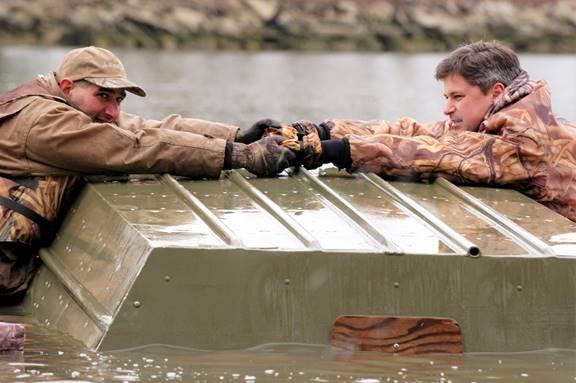
While the air is warmer this time of year, the water is still cold, making survival for any length of time difficult if your boat capsizes.
This is the time of year when many of us are ready to get our boats out on the water. This is also the time of year to remember that while the days are getting warmer, the water is still cold. If your vessel capsizes or you fall overboard, you will have to try to survive in very cold water.
Just a few minutes in cold water can have devastating effects that can lead to death. Whether you are planning to go to the lake to fish or to the river for a day of kayaking, it is important to know the dangers of falling into cold water.
First, you will gasp and most likely inhale water into your lungs. Then, you will struggle with loss of strength in your muscles. If you fall into cold water, your survival may very well depend on whether you are wearing a life jacket. Without a life jacket, you will likely drown before you realize you are hypothermic. Putting a life jacket on after you fall into the water is next to impossible, especially in cold water. Therefore, it is vitally important to always wear your life jacket.
Wear layered clothing for insulation. The recommendation is to dress for the water temperature, not the air temperature. Do not wear cotton. When wet it is worthless as an insulator and is heavy.
Remember: “Wick, Warmth, and Weather.” Wear a wicking fabric next to your skin, insulating layers of fleece or wool, and then an outer layer made of windproof, watertight materials.
The best defense against cold water immersion is to prevent capsizing and falls overboard. If you do fall into the water, don’t panic. If you’re not already wearing a life jacket, try to put one on.
Do not take off your clothes
Try to re-board your boat or get on top of anything that is floating. Get as much of your body out of the water as possible. You will start to lose strength if you stay in the water for more than a few minutes, so get yourself and others out of the water as soon as possible.
If you are unable to get out of the water, focus on reducing heat loss. Stay as still as possible and let your life jacket support you. Staying with the boat is usually a better choice than trying to swim for shore.
Adopt a position to reduce heat loss. If you are alone, pull your knees toward your chest and your arms into your sides, assuming a fetal-like position. In swimming, this is called the “HELP” position, and it is a survival method used to conserve heat if you have fallen into cold water. It is difficult to maintain this position unless you are wearing a life jacket. “HELP” stands for Heat
Escape Lessening Posture. If others are in the water with you, huddle together.
Carry a communication device. You can use an Emergency Position Indicating Beacon (EPIRB) or Personal Locator Beacon (PLB) to send out an emergency distress signal and summon help.
If you placed your cell phone in a sealed plastic bag and attached this to your life jacket, you can
use your cell phone to call for help.
When you are able to get to shore, or as soon as rescued, wrap up in warm blankets and seek a warm environment. Seek medical attention immediately.
Hopefully, we can all pay attention, and commit to keeping ourselves and others safe on the water. The best way to come out of the water alive and healthy is to have your life jacket on before you wind up in the water..


